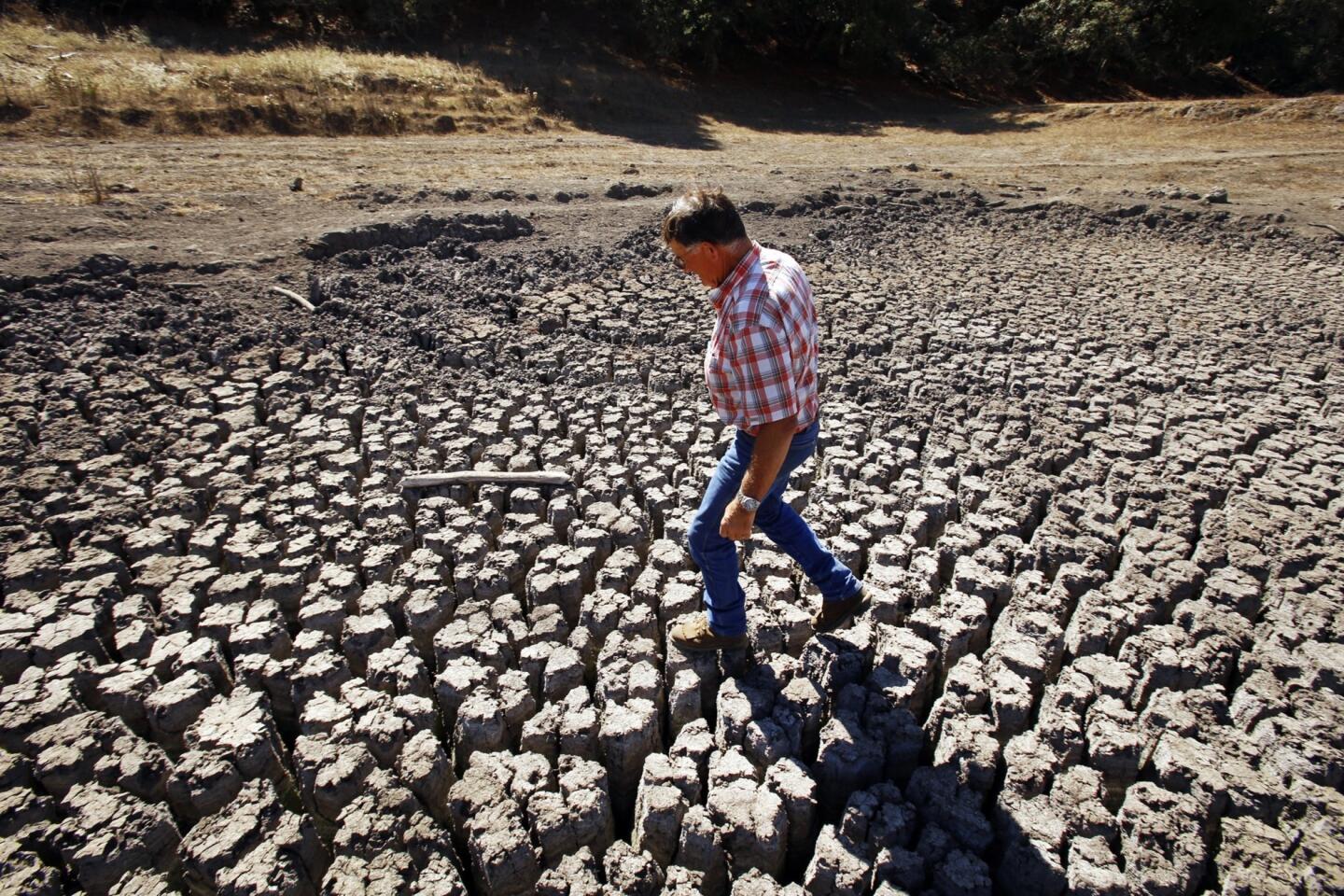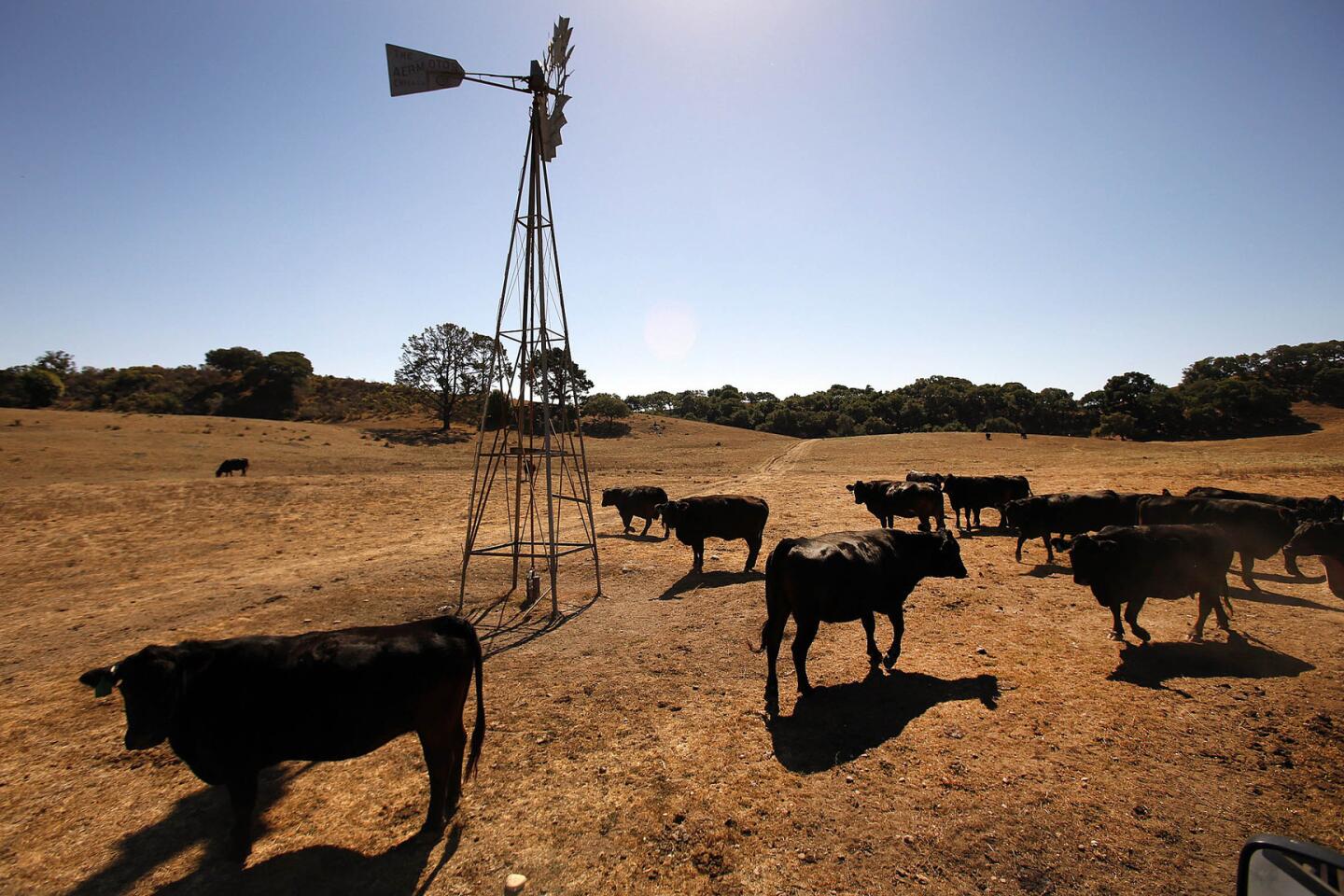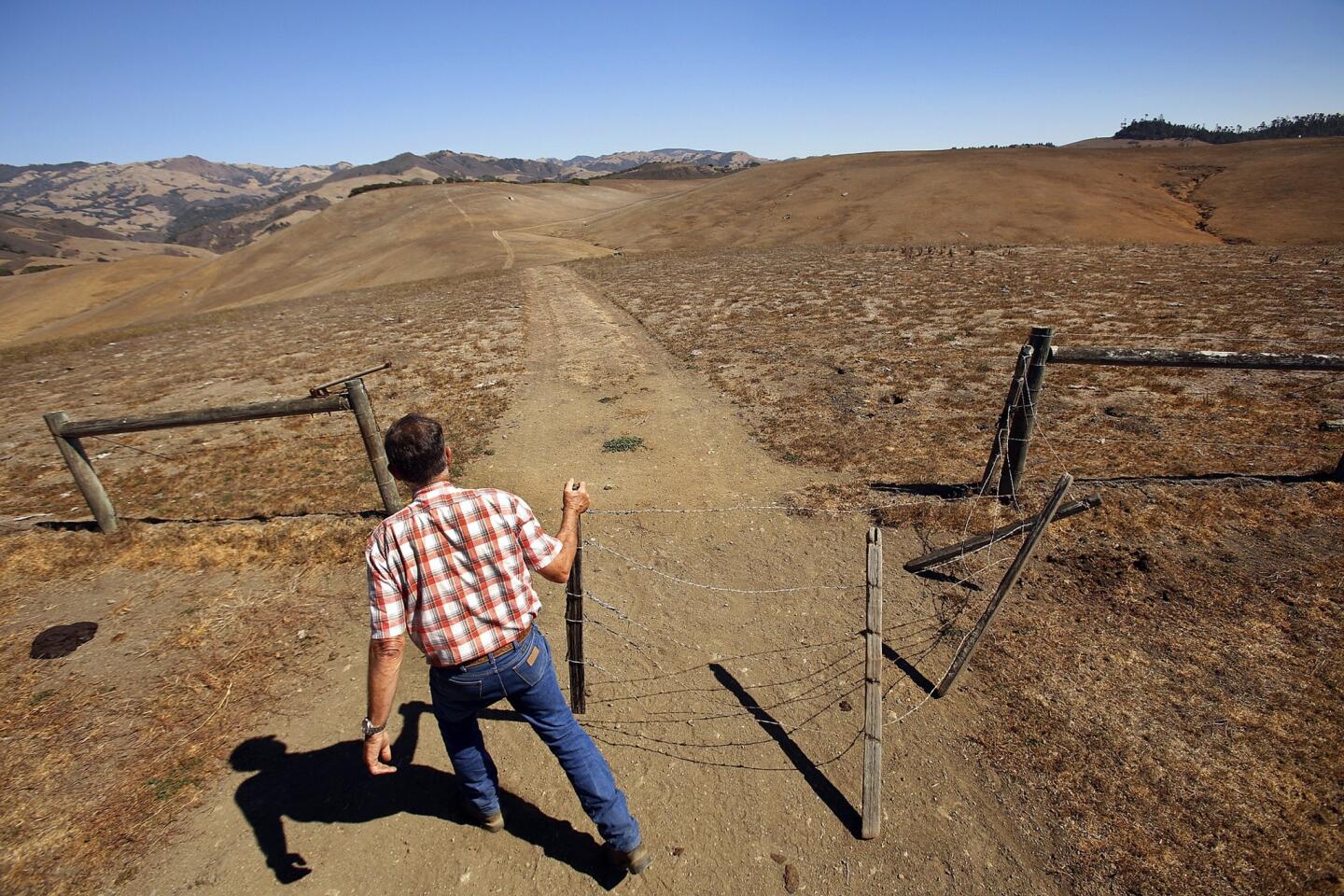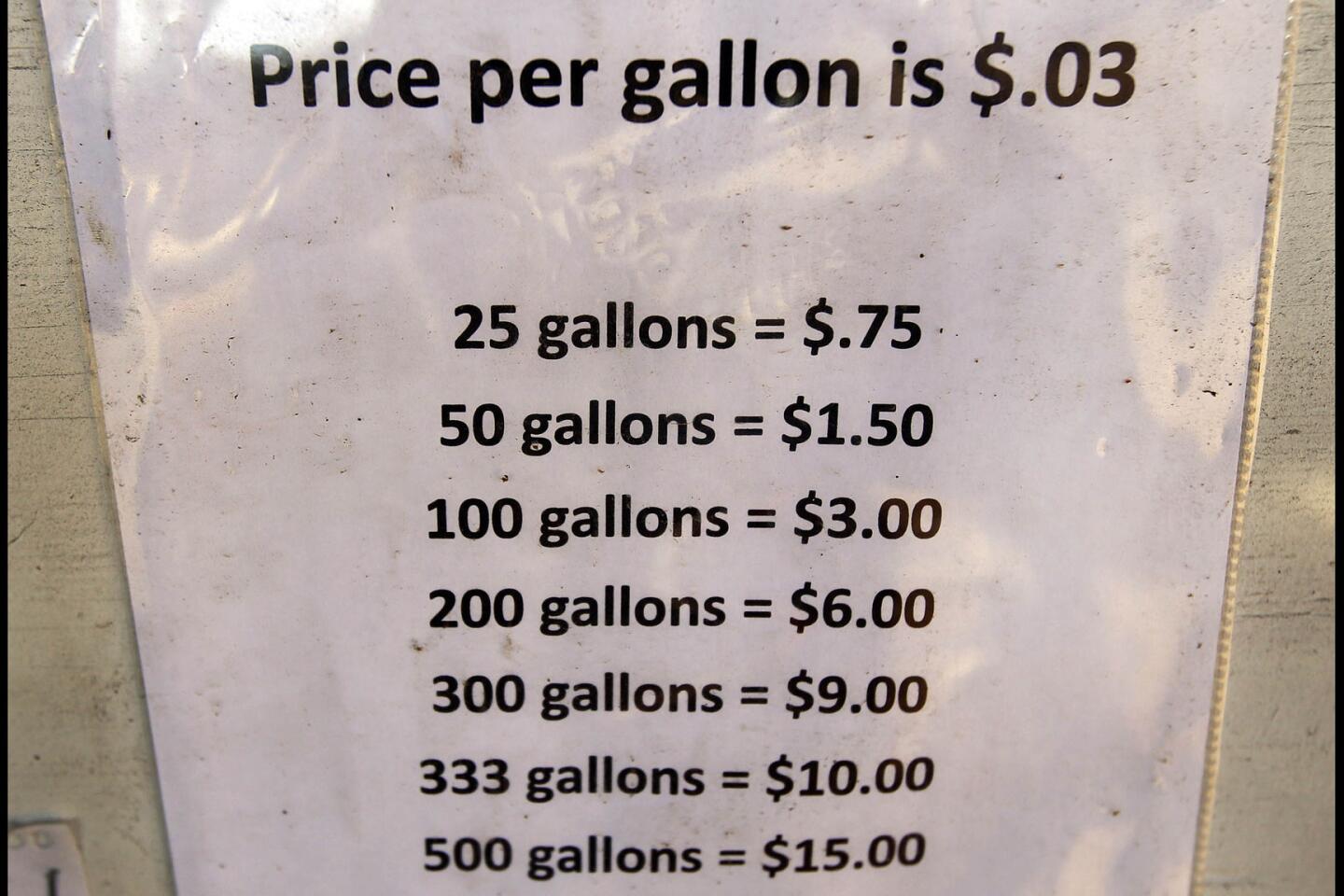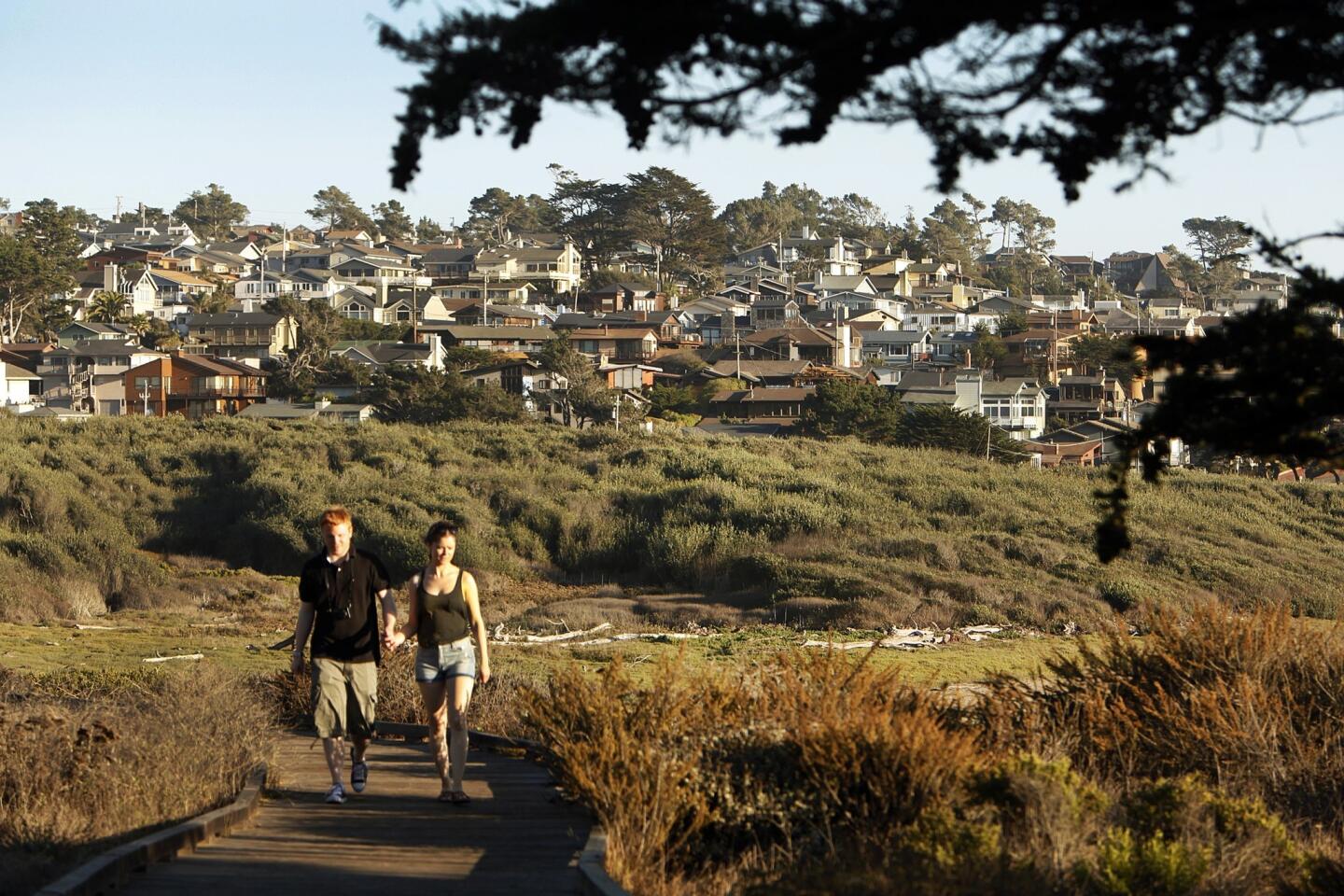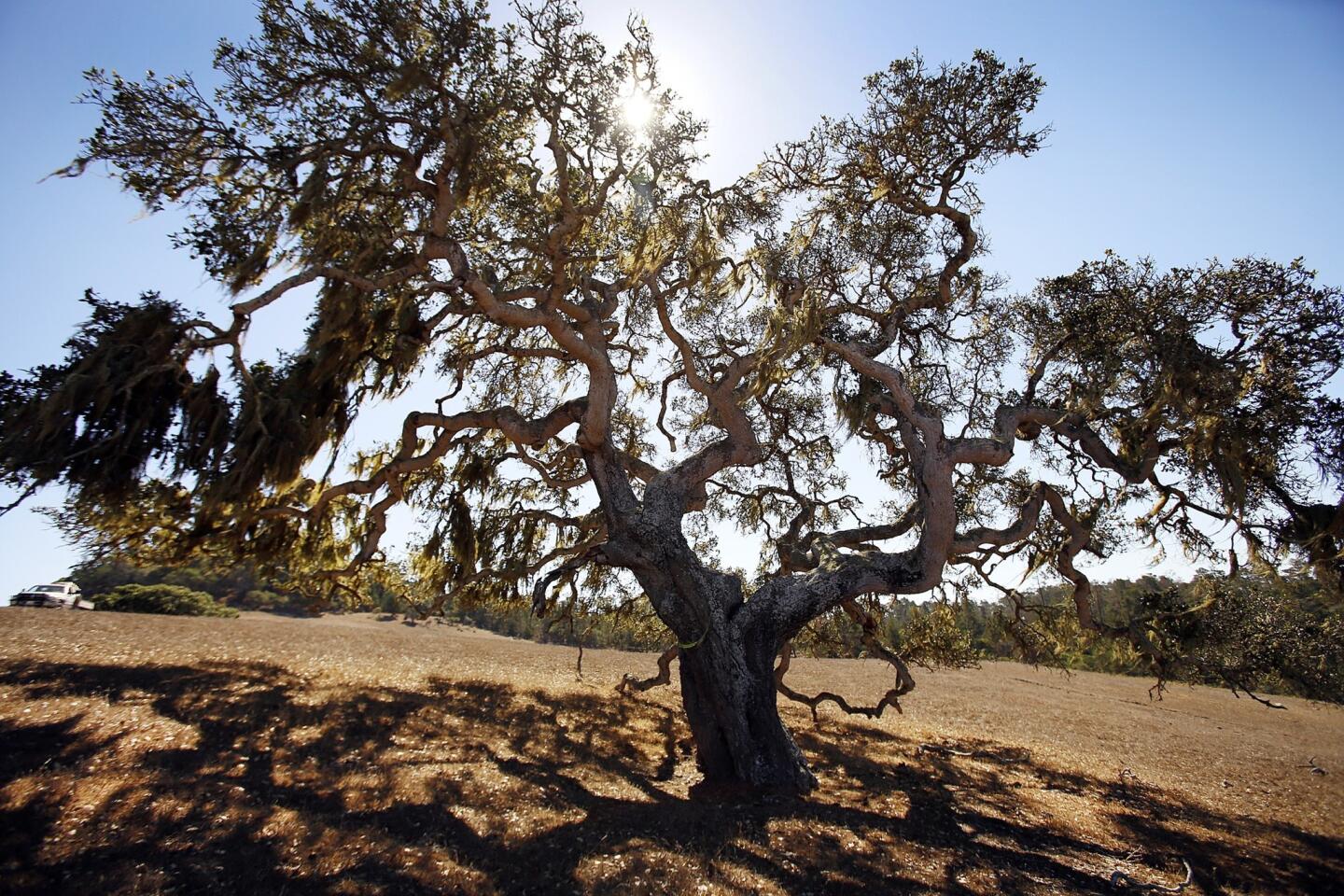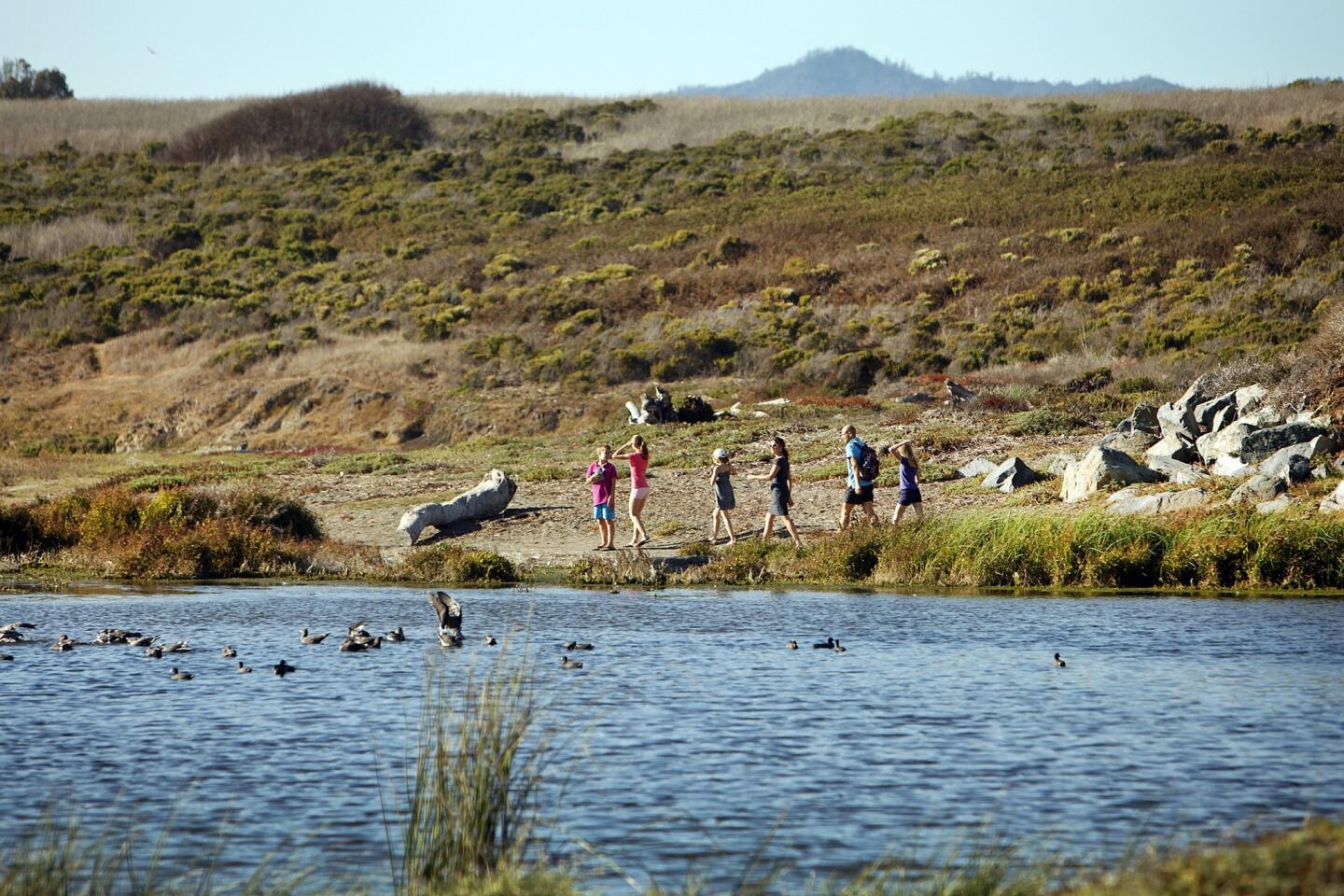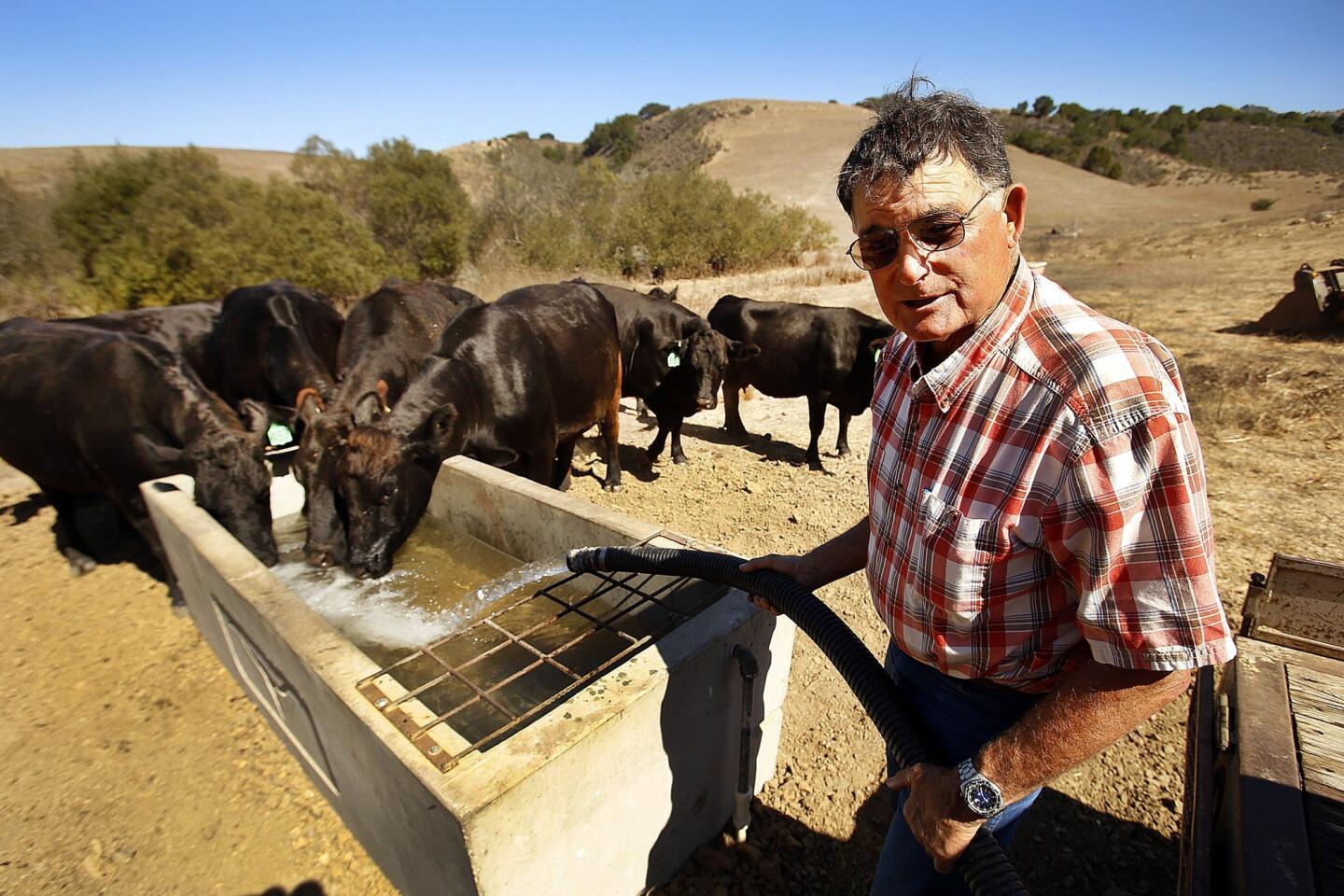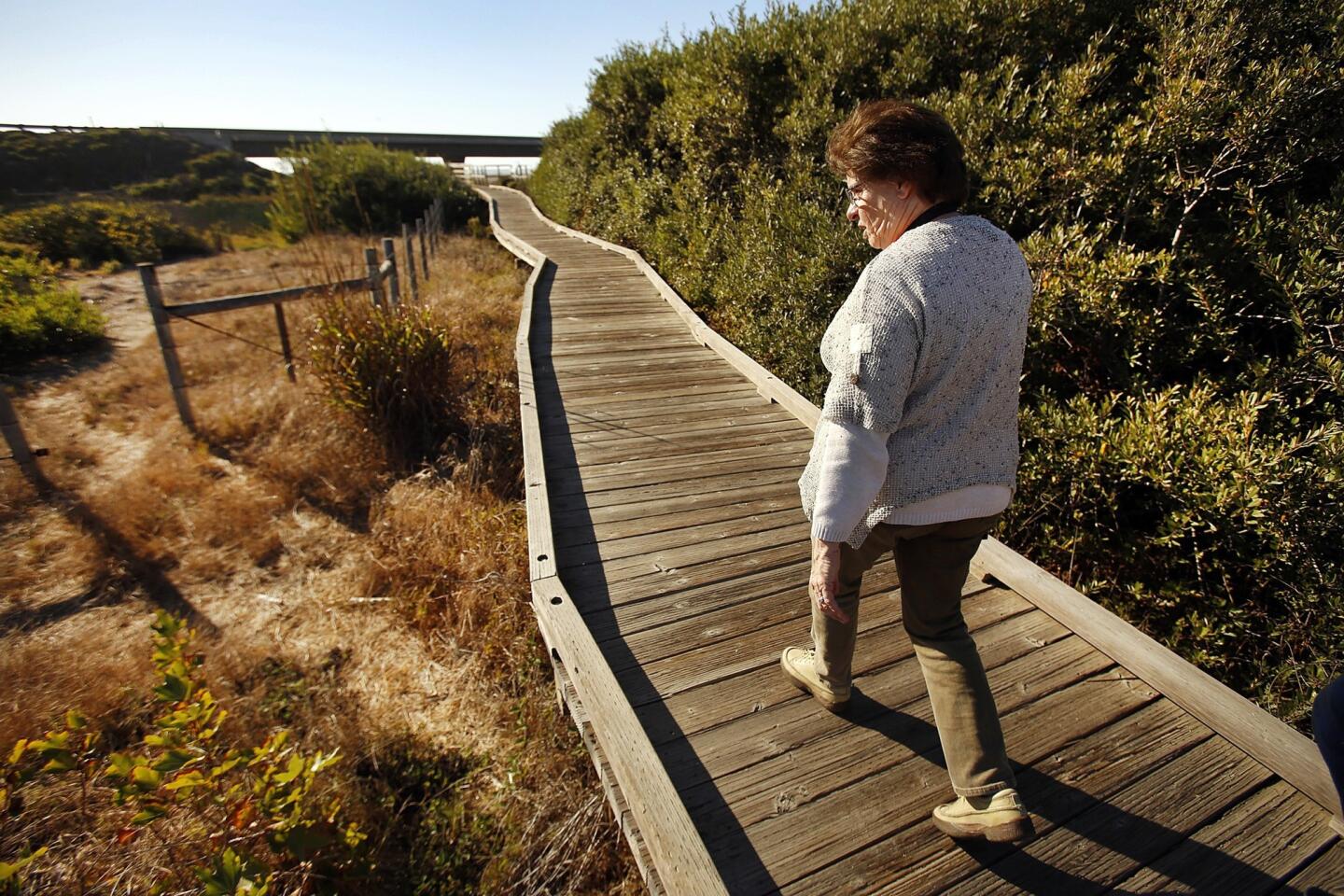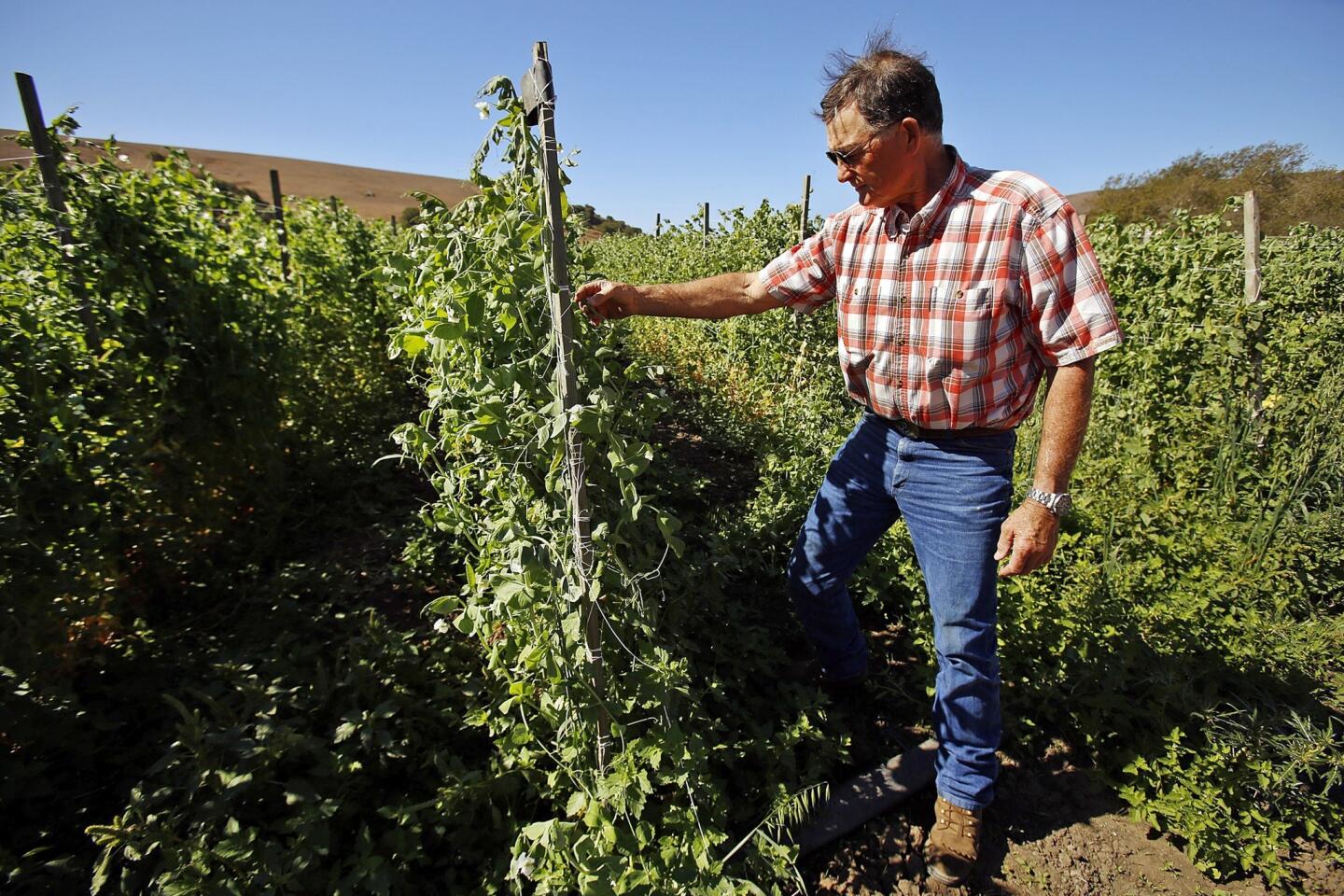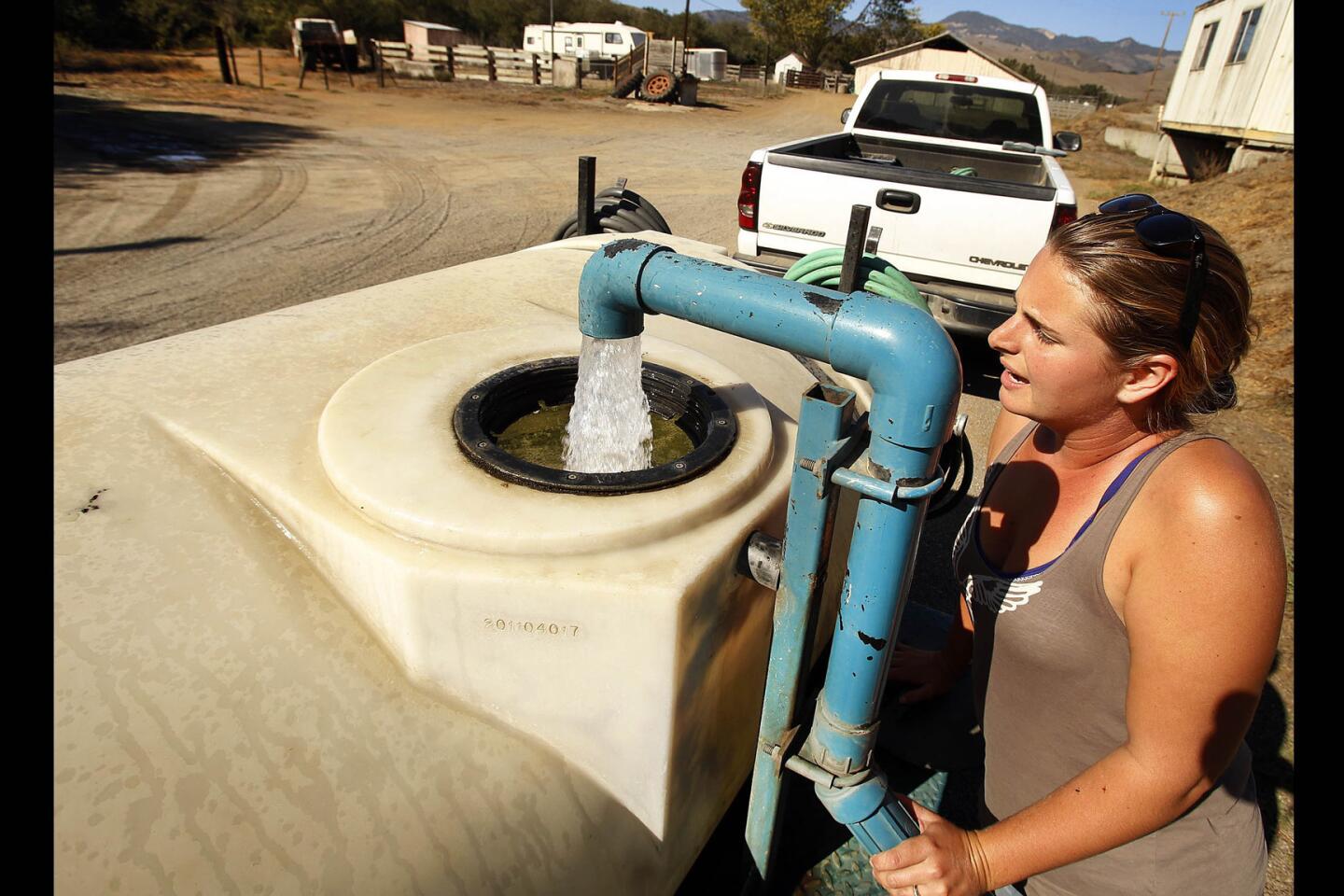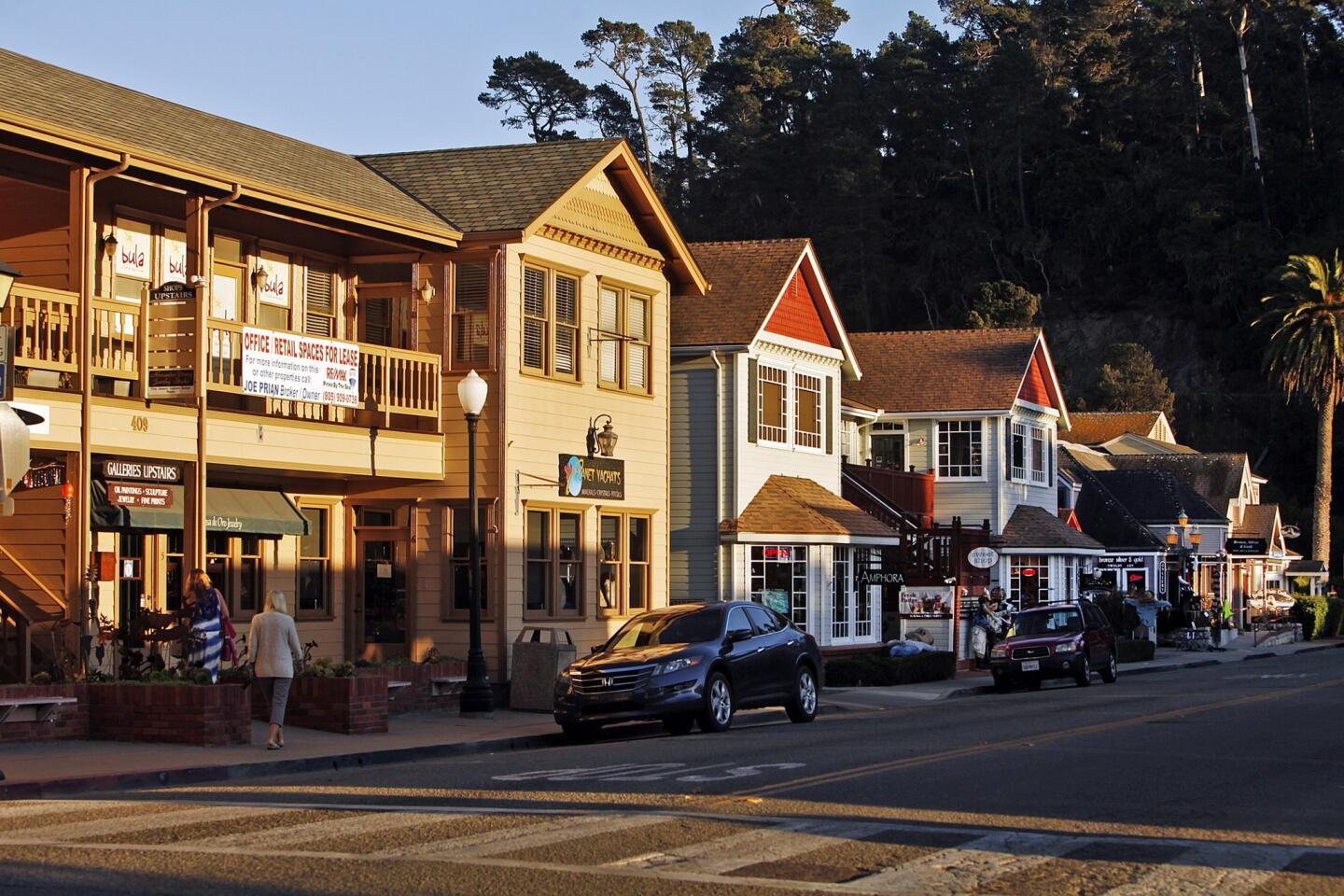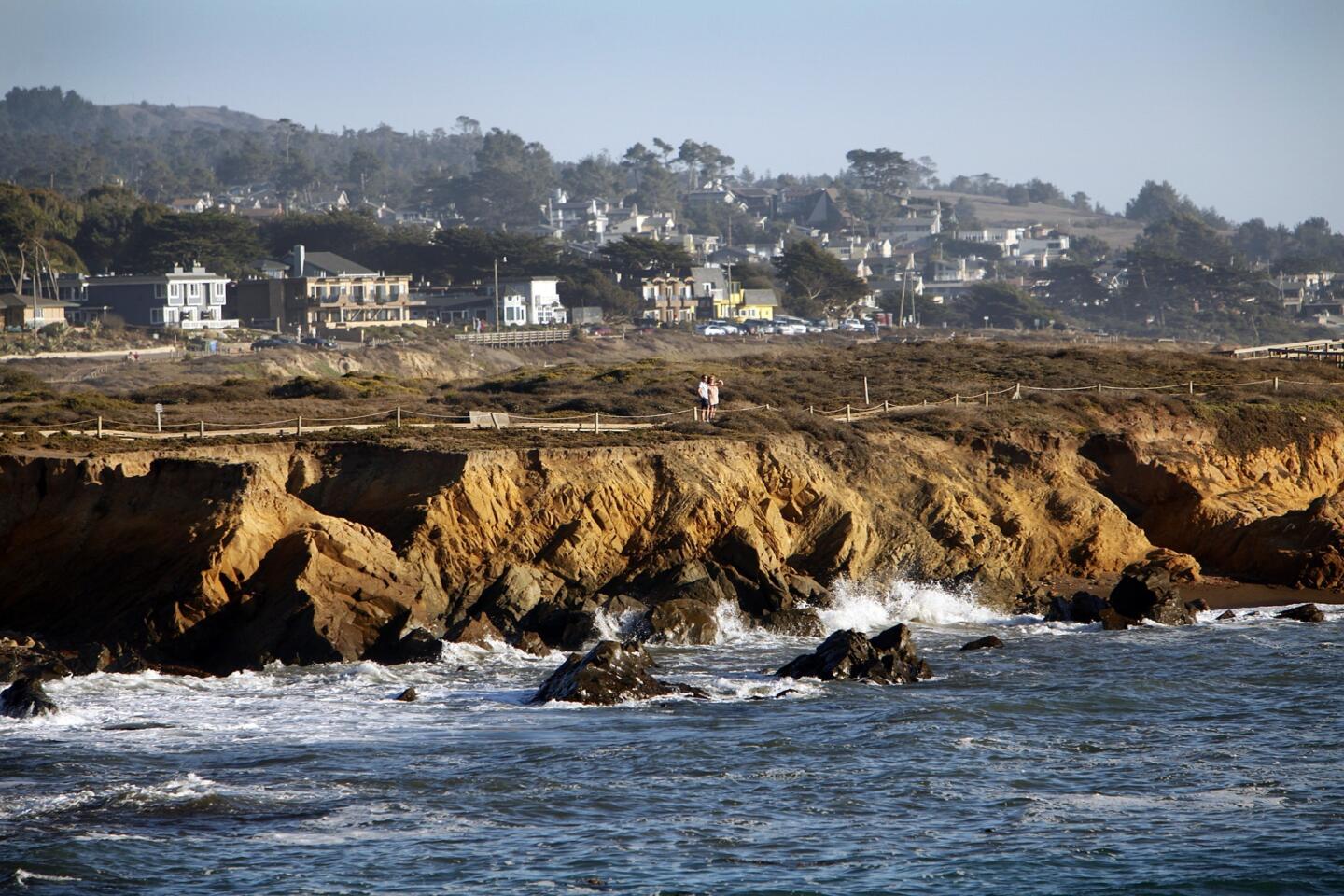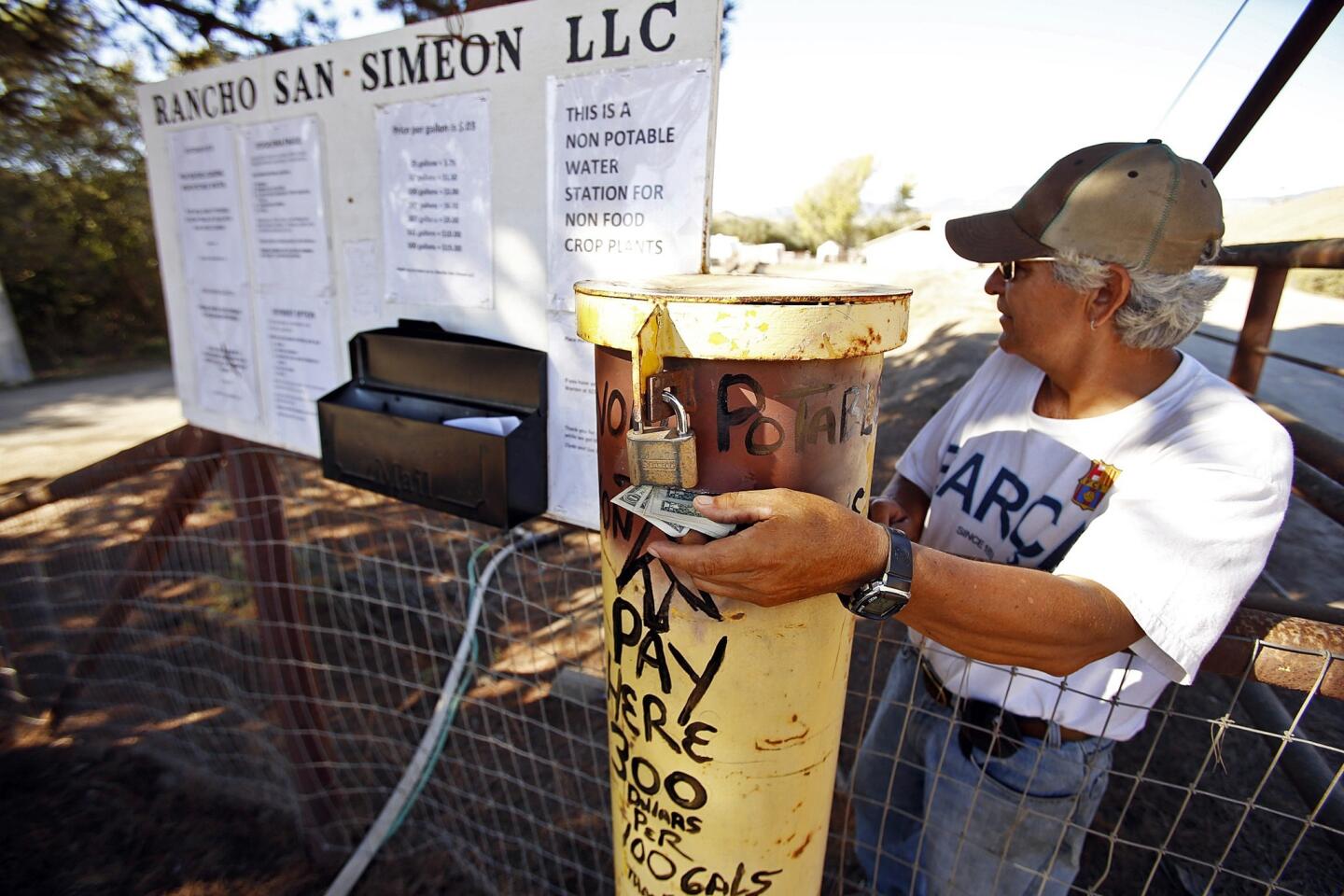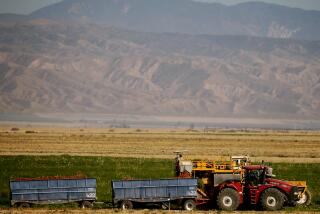In Cambria, rift over water treatment plant is a drain on parched town
CAMBRIA, Calif. — They’re the trees that gave this quaint Central Coast village its nickname: Cambria Pines by the Sea.
But the towering Monterey pines — one of only three such native forests in the United States — are being ravaged by the drought. Most are brown and brittle. Weakened by lack of water, some have toppled. Others were cut down to prevent them from falling on cars and houses.
“The town lost 25% of its trees last year, and half of those that are standing are brown and dead,” said Rick Hawley, a founder of the preservation group Greenspace, who waters some of the younger, more vulnerable trees.
The trees are a symbol of the drought’s effect on the relatively isolated Central Coast, which — despite its proximity to the world’s largest body of water — is particularly vulnerable to shortages because it relies on an unstable networks of creeks, lakes and State Water Project allocations.
As the three-year drought drags on, cities and towns on the Central Coast are looking for alternatives: Santa Barbara may dust off its dormant desalination plant, and San Luis Obispo County wants to connect two pipelines to deliver emergency water to Morro Bay and state and county agencies along Highway 1.
In Cambria, the water shortage is particularly acute because its 6,000 residents get all of their supply from two shrinking local creeks. To prevent the creeks from going dry, the Cambria Community Services District is building a controversial treatment plant to essentially make the town’s water go further.
Over the last year, Cambria embarked on a massive civic effort to reduce water consumption, and it succeeded: Water use dropped 40%.
Yet that was not enough for the unincorporated community six miles south of Hearst Castle. The Community Services District declared an extreme water shortage in January and soon secured a fast-tracked county permit to build the water treatment plant along one of two creeks that feed its aquifer.
“We were faced with well levels dropping precipitously, and we needed to take action,” said Jim Bahringer, president of the district’s board of directors.
But critics say the $9.13-million water treatment plant will damage the delicate ecosystem, particularly San Simeon Creek lagoon, and burden ratepayers for years. They say there never really was a drought emergency because of successful conservation measures, and some liken the plant to a land grab to spur future growth.
“They’re trying to turn this into Carmel,” resident Tina Dickason said recently as she photographed mallards floating in the marshy lagoon. “If we wanted to live in Carmel, we would have moved there.”
Water rates will increase “significantly” to cover construction and operating costs, Bahringer said, with the amount depending on usage and whether the customer is a home or business. The district also has applied for state drought relief grants to help cover the cost.
The treatment plant being built upstream from the lagoon would replenish the town’s wells in drought years by treating brackish water — a combination of groundwater, percolated wastewater treatment plant effluent and a mix of fresh water and salt water — and eventually returning it to the aquifer.
The plant is being built under an emergency permit approved by San Luis Obispo County, but Bahringer said the goal is to make it permanently available during drought years when the wells fed by San Simeon and Santa Rosa creeks run dangerously low.
On Oct. 14, an environmental group called LandWatch San Luis Obispo and Stanford Law School’s Environmental Law Clinic filed a lawsuit alleging the Community Services District violated state laws by rushing the plant through the permit process.
District officials denied the allegations, especially the notion that there is no emergency.
“This is a preposterous position given the undeniable reality of the water crisis Cambria is facing,” officials said in a statement. “The fact that Cambria is in an unprecedented emergency has been recognized by every level of government in the permitting process.”
Bahringer and other proponents, including a new group called Cambrians for Water, bristle at suggestions the project is a front to enable development.
“Our opponents have always used water as a weapon to stop growth,” said Greg Hunter, a group founder. “But the problem is they’ve also stopped us from developing a reliable and sustainable water source that will take our residents and businesses through drought periods.”
Opponents said they would prefer the district build a reservoir to bank water during rainy years. And they say they know the perfect site: a canyon near San Simeon Creek on land that rancher Clyde Warren has said he would sell to the district.
For now, many Cambrians are taking advantage of another offer made by Warren: He sells them non-potable water for three cents a gallon to keep their gardens from withering.
On a scorching afternoon, Heather Menges jumped out of her pickup and stuck a hose into the 500-gallon tank in the bed. It was one of 10 trips she makes to Warren’s well six days a week, delivering water to residents and to hotels on Moonstone Beach. She started her business, the Watering Can, in September 2013, thinking it would last only a few months and she could become a stay-at-home mom to her 21/2 -year-old.
“It’s scary,” she said of the long-running drought. Although she lives in Cayucos, Menges grew up in Cambria and said she supports the water treatment plant.
“Any kind of backup plan is good,” Menges said. “It’s insurance for Cambria.”
Many residents have bought their own backyard tanks to water their yards and gardens, and water trucks large and small are a common sight.
“People basically let their gardens die or they bring in their own water,” said Catherine Ryan Hyde, a writer who has lived in Cambria for 30 years. She recently installed a 300-gallon tank in her yard to sustain hers, especially a cherished dwarf lemon tree, a birthday gift from her mother before her death.
“Even if I have to buy quart bottles of drinking water, I’m going to hold on to it,” she said of the tree.
Beyond its yards and gardens, Cambria’s famed Monterey pines also are at risk. Experts say the drought could kill as many as 40% of them. The California Department of Forestry and Fire Protection is planning to survey the extent of the devastation, said Alan Peters, a unit forester for the agency in San Luis Obispo County.
“There’s been a dramatic increase in dead, orange trees,” Peters said. “You can see it. They’re not going to come back, even if it poured rain.”
Hawley of Greenspace opposes the plant and says offers by ranchers to help Cambria through the drought, or even leasing a mobile desalination plant, are preferable alternatives.
“By the way, we’re not going to run out of water,” Hawley said of warnings by the community services board that Cambria could run dry by year’s end. “That’s a scare tactic.”
On a recent bright morning, Jon Pedotti piloted his pickup over the brown hills of his 1,561-acre ranch as San Simeon Bay glistened in the distance. A natural spring that once sated the thirst of his 280 head of cattle has long since dried up, so he hauls a 500-gallon tank through an oak-studded canyon twice a day to water them.
On a different part of the ranch, past the parched lake bed where his cows once drank unfettered, a windmill-powered well feeds another trough.
To Pedotti, the water wars in Cambria are personal. He has owned, worked and lived on this land since 1973. He has seen what his neighbors have accomplished in the face of ever-diminishing water supplies.
“The residents of Cambria are heroic,” Pedotti said. “They’re living on less water than anyone else in this state. You can’t squeeze another drop out of Cambria.”
Although no one asked him to, Pedotti has left half the 103 acres of irrigated land on his ranch unplanted to ease the toll on the local aquifer — and, by extension, his friends in Cambria. As a result, two unused wells could be tapped by the water district, and he figures they could supply about one-third of Cambria’s water needs for the next three months.
“There’s not a rancher here who wants to see Cambria run out of water,” Pedotti said. “If every agency signed off on this [water treatment plant] based on the fact that there was an emergency, then why won’t they take the water from our wells?”
Twitter: @amcovarrubias
More to Read
Sign up for Essential California
The most important California stories and recommendations in your inbox every morning.
You may occasionally receive promotional content from the Los Angeles Times.
